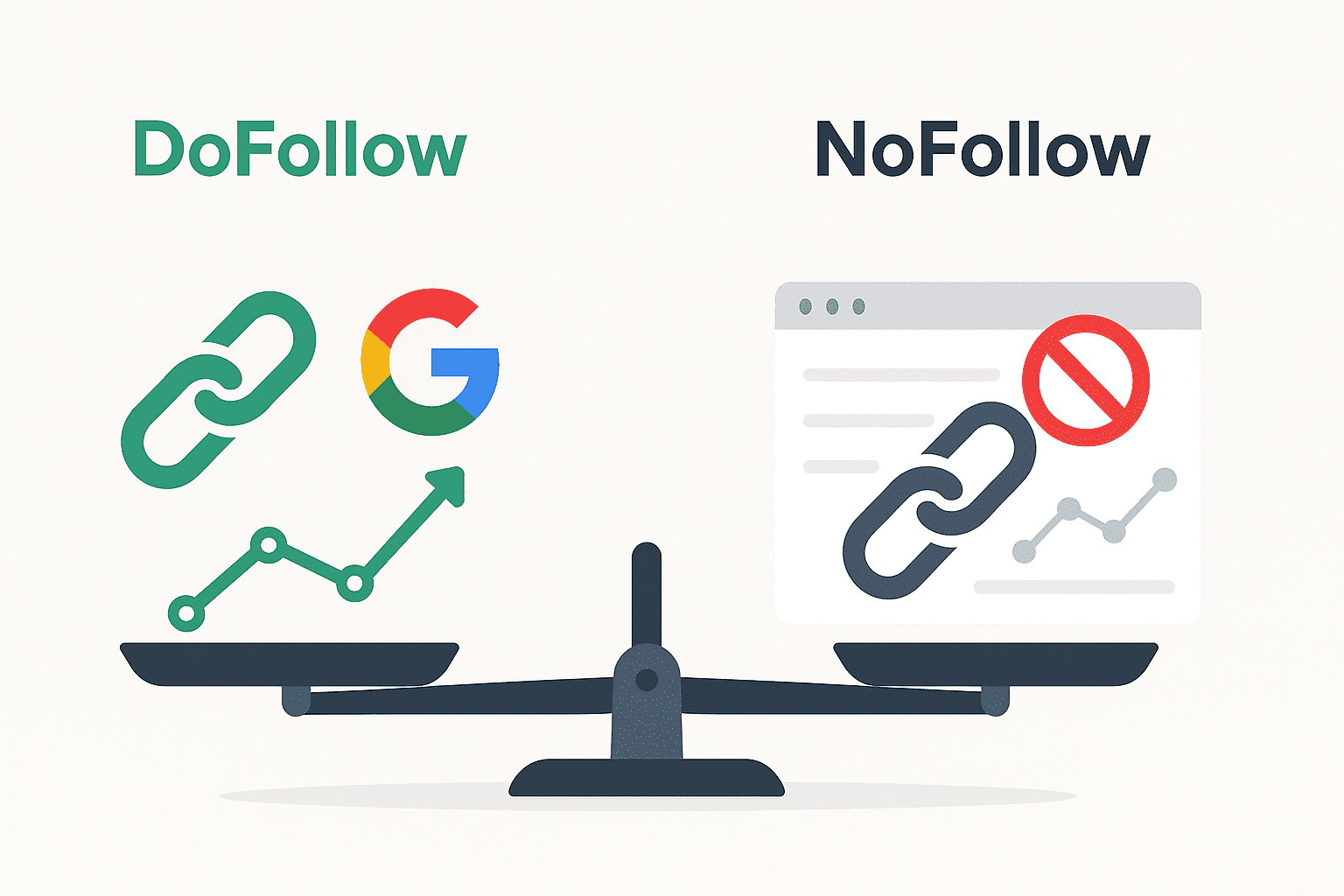DoFollow vs. NoFollow Links: What’s the Difference in SEO?

1. What Is a DoFollow Link?
A DoFollow link is the default type of hyperlink. It allows search engines to crawl the link and pass on “link equity” (also called PageRank).
📌 Example:
<a href="https://example.com">Best SEO Tools</a>
Passes link authority
Helps with ranking
Indicates a vote of trust
DoFollow links are the gold standard for building authority in SEO.
2. What Is a NoFollow Link?
A NoFollow link tells search engines not to follow or pass link equity to the target site. It was originally introduced by Google in 2005 to fight spammy link-building (like blog comment spam).
📌 Example:
<a href="https://example.com" rel="nofollow">Best SEO Tools</a>
Doesn’t pass link juice (traditionally)
Won’t directly improve rankings
Still drives referral traffic & visibility
3. Why NoFollow Links Still Matter
Even though they don’t boost rankings directly, NoFollow links are far from useless. They can:
Drive targeted traffic (from forums, social media, blogs).
Increase brand visibility and awareness.
Lead to natural DoFollow links (journalists, bloggers, or users who later link to you without nofollow).
4. Other Rel Attributes You Should Know
Google expanded link attributes in 2019:
rel="nofollow" → General hint not to pass equity.
rel="sponsored" → For paid or sponsored links.
rel="ugc" → For user-generated content (comments, forums).
5. SEO Strategy: DoFollow + NoFollow Balance
Aim for a natural mix — 100% DoFollow links looks suspicious.
🔗 Prioritize earning DoFollow backlinks from authoritative sites.
Use NoFollow links on social media, press releases, and forums to gain visibility.
Conclusion
DoFollow links → Authority, rankings, PageRank.
NoFollow links → Traffic, visibility, natural link profile.
Both have value. The smartest SEO strategies use a blend of both, focusing on quality and relevance rather than chasing only DoFollow.